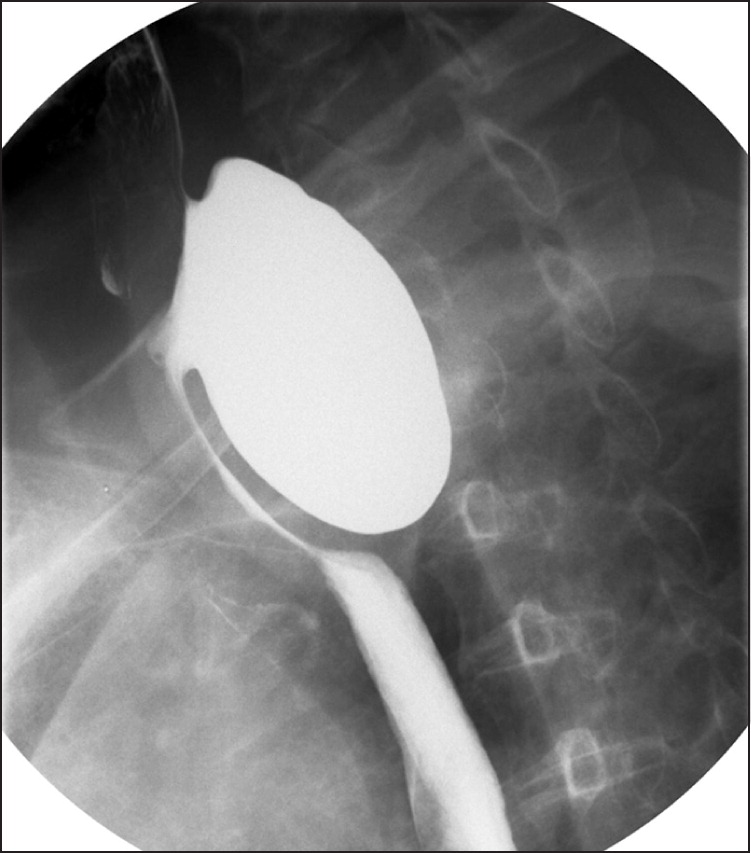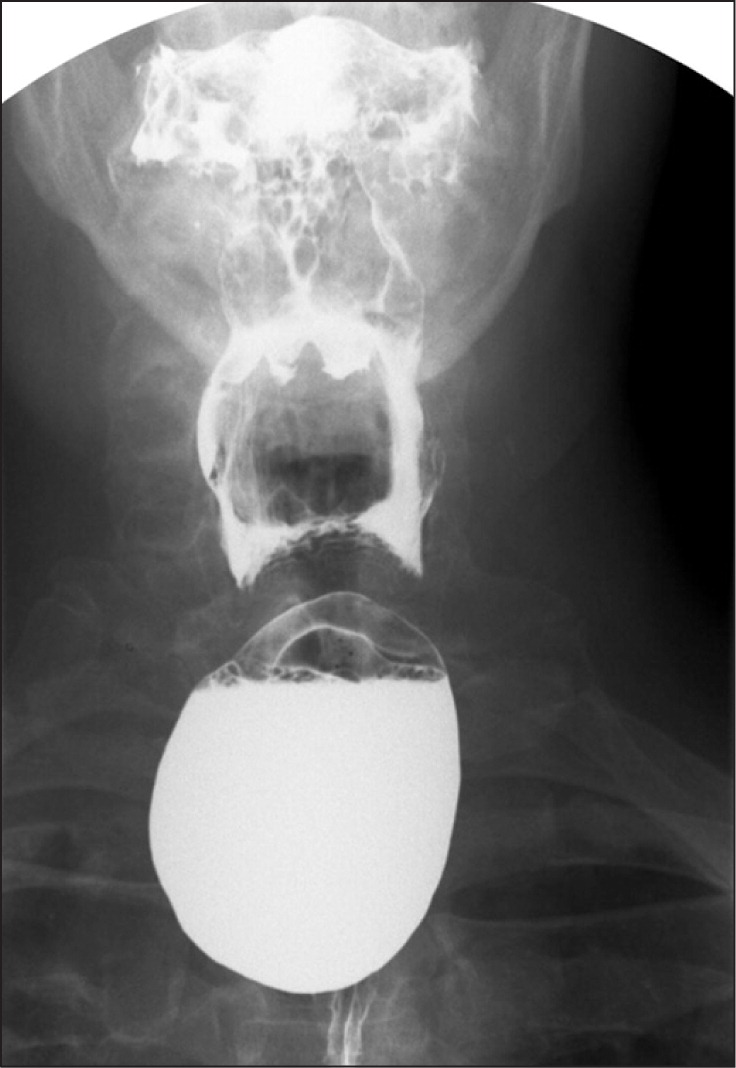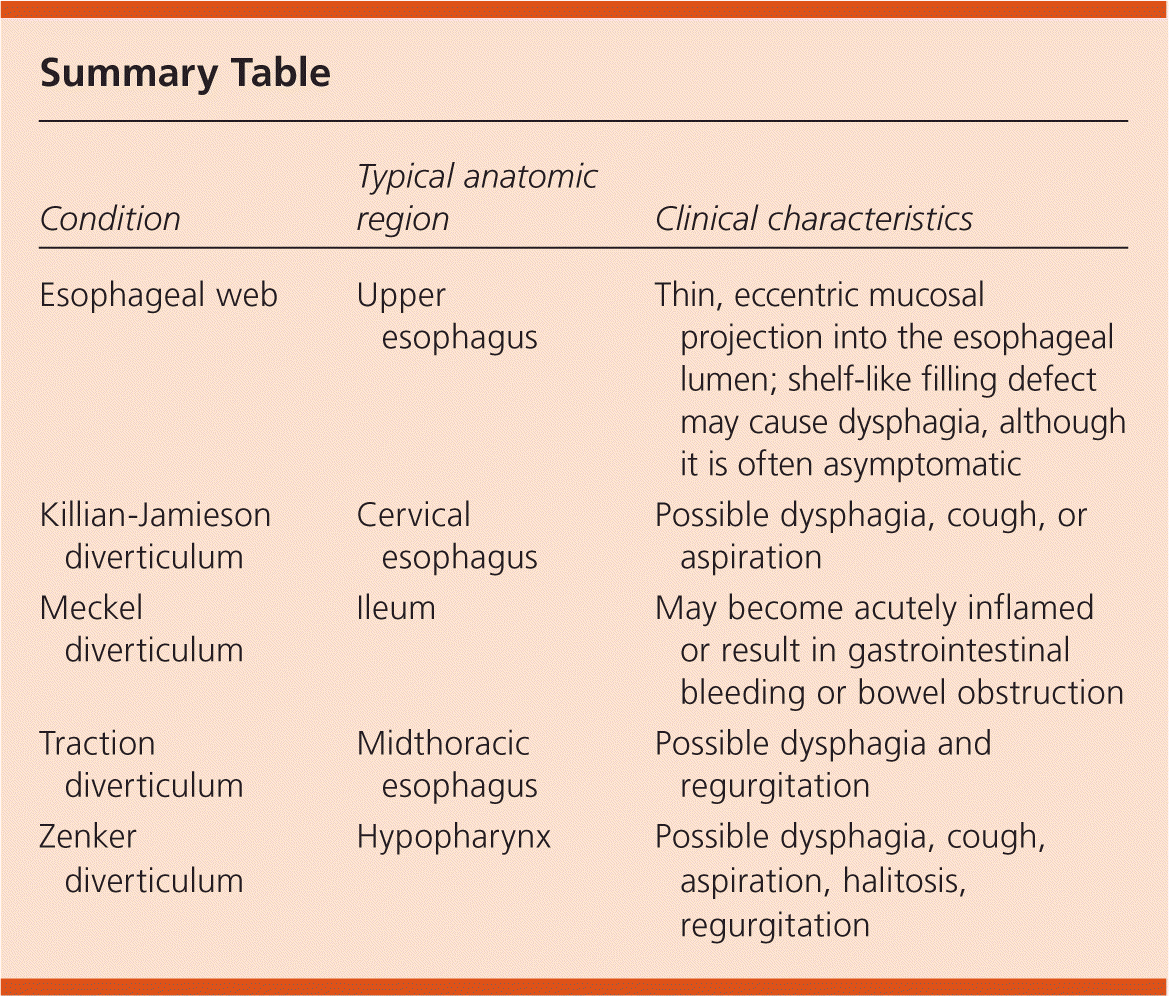
Am Fam Physician. 2014;90(10):727-728
Author disclosure: No relevant financial affiliations.
A 58-year-old man presented to the family medicine clinic with several months of weight loss and difficulty swallowing. He reported that solid foods were “getting stuck” in his throat. He had no relevant medical history, and physical examination findings were normal. Contrast esophagography was performed as an outpatient (Figures 1 and 2).


Question
Discussion
The answer is E: Zenker diverticulum. A Zenker diverticulum is an uncommon posterior herniation of hypopharyngeal mucosa. It occurs through an area of weakness between the inferior pharyngeal constrictor and the cricopharyngeus muscles known as the Killian triangle. The pathogenesis is unclear, but the condition is thought to result from incomplete opening of the upper esophageal sphincter, which causes increased hypopharyngeal pressures and resultant protrusion. Dysphagia, cough, halitosis, and regurgitation of food are common.1,2 Complications may include aspiration pneumonia and, less commonly, bleeding and fistula formation.1 For symptomatic, large diverticula, open or endoscopic surgical repair may be required.
Esophageal webs are typically thin, eccentric mucosal projections into the esophageal lumen. They usually arise from the anterior wall of the proximal esophagus.3 Esophageal webs may be idiopathic, congenital, or related to inflammatory processes. They are often asymptomatic, but patients may present with dysphagia.3,4 An esophagogram classically reveals an anterior shelf-like filling defect.
A Meckel diverticulum is a congenital, usually ileal outpouching from persistence of the omphalomesenteric duct and is not associated with the esophagus. It is commonly described using the rule of twos, in which the diverticulum is typically located 2 ft from the ileocecal valve, presents before two years of age, and is found in 2% of the population. A Meckel diverticulum may become acutely inflamed or result in gastrointestinal bleeding or bowel obstruction.7
A traction diverticulum is an outpouching of the esophagus that develops because of pulling from adjacent inflammatory changes. It is more common in the mid-thoracic esophagus because of adjacent mediastinal, hilar, or pulmonary pathology. Dysphagia and regurgitation may occur.8

| Condition | Typical anatomic region | Clinical characteristics |
|---|---|---|
| Esophageal web | Upper esophagus | Thin, eccentric mucosal projection into the esophageal lumen; shelf-like filling defect may cause dysphagia, although it is often asymptomatic |
| Killian-Jamieson diverticulum | Cervical esophagus | Possible dysphagia, cough, or aspiration |
| Meckel diverticulum | Ileum | May become acutely inflamed or result in gastrointestinal bleeding or bowel obstruction |
| Traction diverticulum | Midthoracic esophagus | Possible dysphagia and regurgitation |
| Zenker diverticulum | Hypopharynx | Possible dysphagia, cough, aspiration, halitosis, regurgitation |
